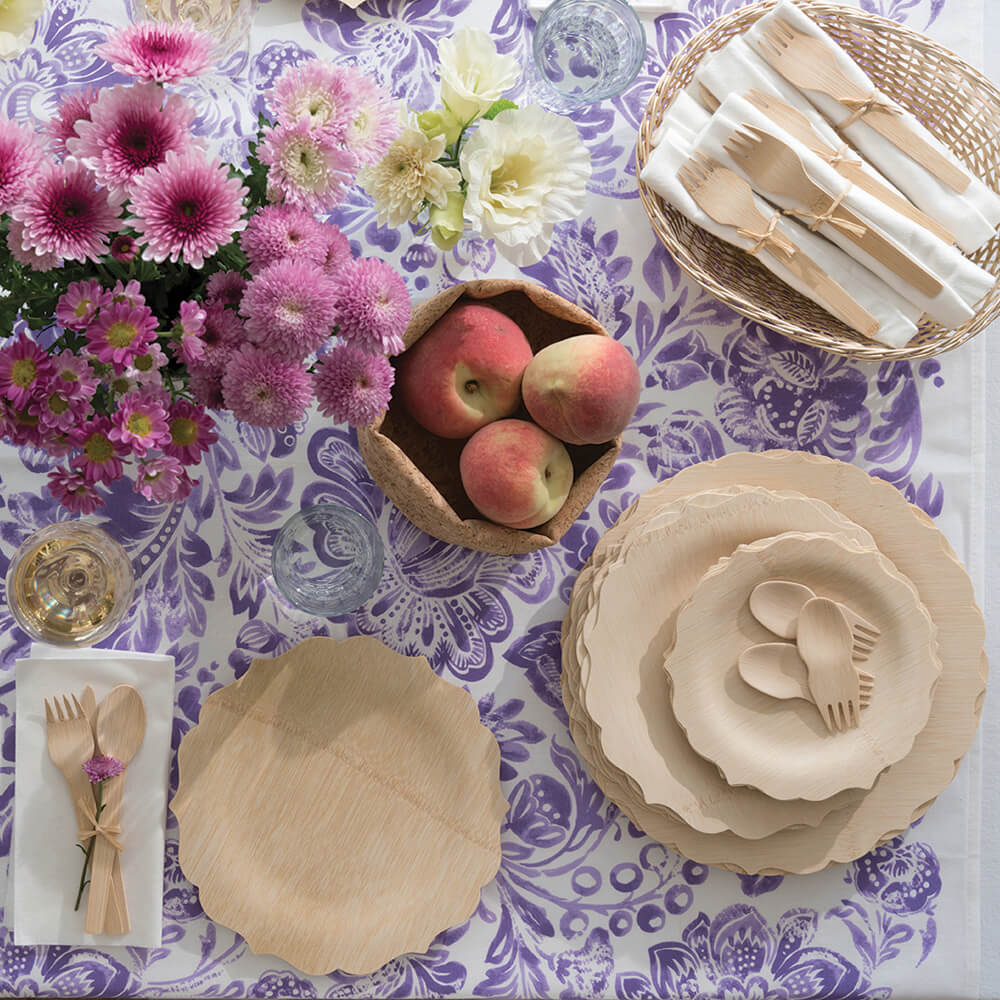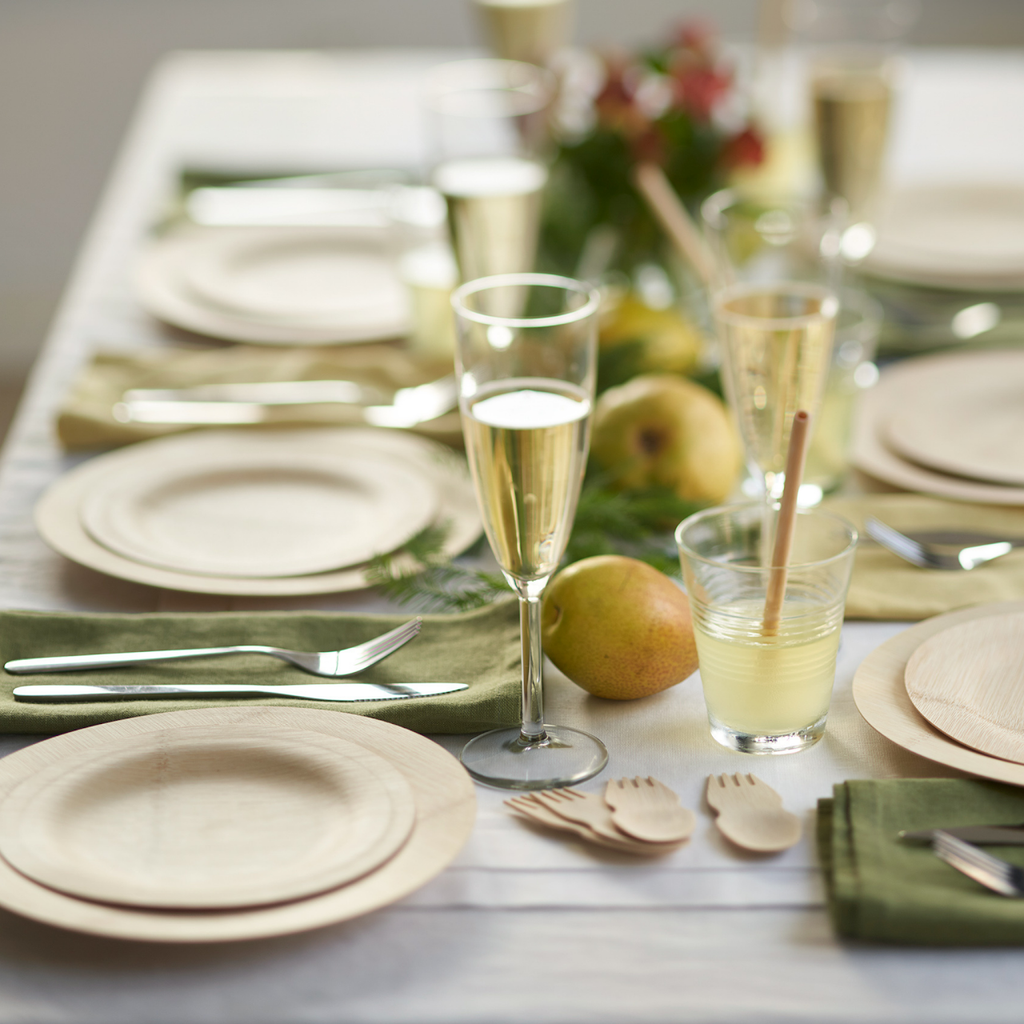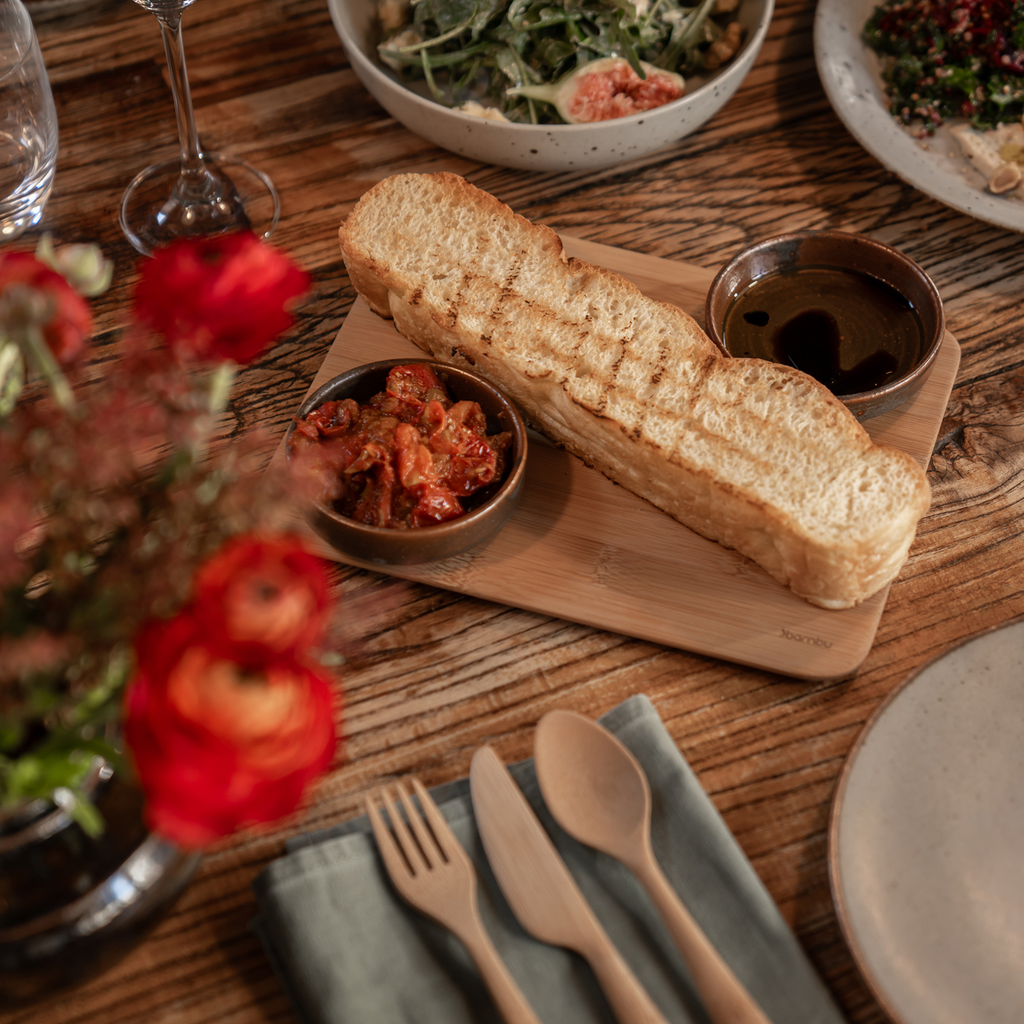Considering a low-waste event? Compostable plates play a key part in making green gatherings happen. Here’s what you need to know to find your perfect plate.
If you're looking to reduce your environmental impact, switching to compostable plates is a great place to start. But with so many options on the market, it can be overwhelming to try and choose the best one for your needs. This guide will help you navigate the different materials, sizes, and features to find the best compostable plates for you.
Understand the different types of compostable plates
Compostable plates come in a variety of materials, each with its own unique benefits and drawbacks. Some of the most common materials include sugarcane, bamboo, palm leaf, and plant fiber.
Sugarcane plates are made from sugarcane pulp. They are sturdy and heat-resistant, which makes them a great choice if you plan to serve hot foods. However, they aren’t compostable at home, so you’ll need to keep that in mind when planning your event.
Bamboo plates offer a lightweight solution that’s durable, attractive, and clean-looking. This material can handle hot, cold, and wet foods with ease. These plates are also compostable in a backyard compost bin as well as commercially compostable. This makes them extremely versatile.
Plant fiber plates are made up of a mixture of natural fibers, such as bamboo and wood. These plates offer a good alternative to plates made from synthetic materials like plastic and styrofoam, but they’re not always as eco-friendly as their natural counterparts make them out to be. Here’s why. In order to achieve the moisture-resistant qualities of other disposable plates, fiber plates are often coated with PFAs. PFAs give these plates a durable, waxy coating. But, these chemicals are dangerous for human health, and the health of the natural world. If you choose fiber plates, ensure that the brand you choose uses a plant-based alternative to a PFA coating.
Consider your specific needs and usage
Before choosing compostable plates, it’s important to consider your specific needs and usage. Are you planning a formal event, or is it a casual BBQ? What type of food will you be serving? Will it be hot or wet (like ribs, casseroles, or sauces)? What is the style of your event? Will it be indoor or outdoor?
When considering the flow of your event, make sure to determine the timeline of your meals. For example, will the food be served and eaten right away (such as a buffet-style event)? Or, will food be plated and served with a time delay? Some plates are more prone to leaking than others. And the last thing you want is a plate that breaks or becomes soggy with time.
Finally, make sure to pick a plate size and style that matches your meal size. A light, hors d'oeuvre-style event might match well with a smaller, appetizer-sized plate. But, if you’re planning a BBQ, a large plate will likely be necessary.
Answering these questions can help you select the materials that will fit your needs and wants. Additionally, consider the size and shape of the plates, as well as any additional features like compartments or lids, to ensure they meet your requirements.
Look for certifications and standards
When choosing compostable plates, it’s important to look for certifications and standards to ensure they are truly compostable and environmentally friendly. After all, who wants to go to the trouble of finding a so-called green alternative– and find out that you’ve been greenwashed?
Commercially Compostable Vs. Backyard Compostable
Speaking of certifications, it’s essential to understand the difference between commercially compostable and backyard compostable plates. If you don’t, you might end up with a product that can’t be composted near you.
Backyard, or at-home, composting is more popular, and you’ve likely heard of it. Compostable items that can break down at home are able to turn into healthy soil in a compost pile or bin. At-home compostables are fairly easy to decompose. You can toss them in your own compost bin, or send them to a commercial compost facility. But, most compostable plates are not backyard compost certified, so you’ll likely need to use a commercial compost facility.
Commercially Compostable
Commercially compostable plates are still compostable, but they require a bit more to break down. So, they’ll only break down in a commercial compost facility. These facilities use high heat and moisture to facilitate the composting process.
Commercial compost facilities are still few and far between in most places. If you live in a more rural area, it’s unlikely you’ll find one. And if these products aren’t disposed of properly, they’ll sit in the landfill the same way plastic and styrofoam do. But if you do live near a facility, commercially compostable products might be a great option. Find your nearest approved compost facility with this map.
Evaluate the environmental impact
When choosing compostable plates, it’s important to consider the environmental impact of the materials used to make them, and what’ll happen to them when they’re disposed of.
First and foremost, look for plates that can be properly composted where you live. Most compostable plates require commercial composting, so if you don’t live near a facility that offers this, consider how you might be able to transport these items to the nearest town that does.
Next, look for plates made from renewable and sustainable resources, like bamboo, sugarcane, or cornstarch. These materials have a lower environmental impact than traditional plastic or paper plates. Although, some are better than others. Bamboo, in particular, offers best-in-class sustainability. It’s the fastest-growing woody plant on Earth, and it’s naturally resistant to pests. This eliminates the need for harsh pesticides and chemicals. Because of its fast and clean growth cycle, bamboo offers an uber-renewable life cycle.
Finally, consider the manufacturing process and transportation of the plates. Does the company use any glues, dyes, or chemicals in the plate manufacturing process? If they do, make sure that they’re food-safe and non-toxic. Do they offer carbon-neutral shipping? Evaluating all the factors that contribute to the environmental impact of your compostable plates can help you make a more sustainable choice.
Compare prices and availability
Once you have narrowed down your options based on environmental impact and material, it’s important to compare prices and availability. Compostable plates can vary in cost depending on the brand, size, and quantity. Consider purchasing in bulk to save money and reduce packaging waste. Bulk options are a great choice for larger events, but they also can be stored and used for multiple smaller events. While compostable plates might cost a bit more than paper or plastic, there are ways to balance affordability and sustainability.
Our Pick: Veneerware Bamboo Compostable Plates
When it comes down to sustainability, durability, and versatility, there is one option that sets itself apart: bamboo. Compostable bamboo plates like these are made with 100% organic bamboo. And, they’re stronger than standard disposable plates, while remaining lightweight. Compared to the other options on the market, bamboo plates offer a clean, even look and feel that’s hard to find with any other material.
If you’re searching for the best compostable plate for your next gathering, bamboo just might be the ticket.
Feel the bambu difference! Shop Veneerware, the first and only line of compostable plates made from USDA organic bamboo.





